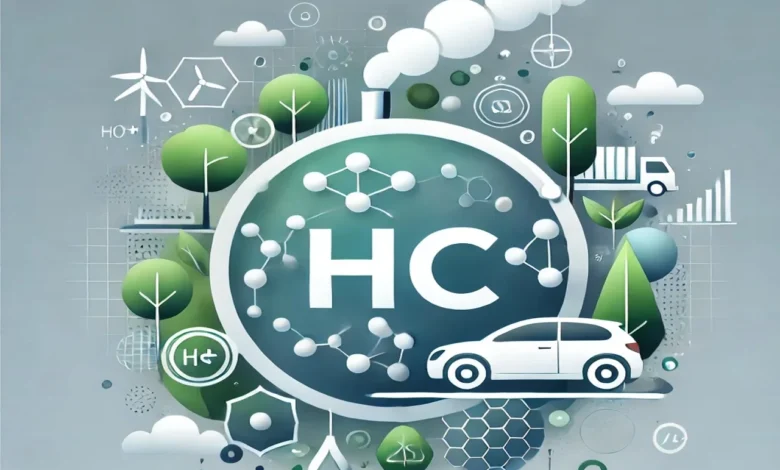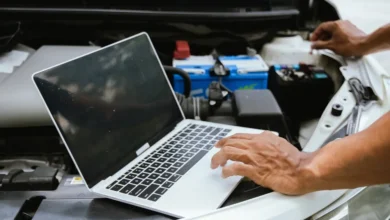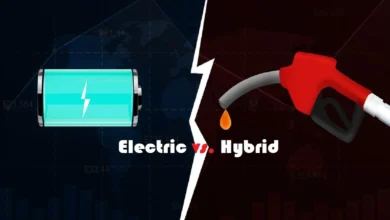
Are you struggling with high hydrocarbon (HC) emissions? Have you recently failed an emissions test, or are you concerned that your vehicle may not pass? High HC emissions can be a frustrating problem. They not only affect your vehicle’s performance but can also lead to fines and expensive repairs if left unchecked. Even worse, they’re harmful to the environment, contributing to smog and poor air quality.
When you realize that HC emissions are more than just a number on a report—they represent unburned fuel that your engine isn’t processing correctly. Whether you’re dealing with misfires, dirty fuel injectors, or even an aging catalytic converter, high HC levels signal that something is going wrong under the hood.
But don’t worry—there’s a solution. With a few strategic tricks, both easy and advanced, you can significantly reduce HC emissions, improve your vehicle’s performance, and help protect the environment. This guide will provide you with in-depth tips and tricks from an emissions expert, sharing over 20 years of knowledge on how to tackle this problem.
What are Hydrocarbon (HC) Emissions?
Hydrocarbons (HC) refer to a class of emissions that result from unburned or partially burned fuel escaping from a vehicle’s exhaust system. Hydrocarbons are compounds made up of hydrogen and carbon atoms, and they are emitted when the combustion process inside the engine is incomplete.
In a perfect combustion process, all the fuel would burn completely, producing only carbon dioxide (CO₂) and water vapor (H₂O). However, real-world conditions often result in incomplete combustion, which produces HC emissions. These emissions can occur for several reasons, including a rich air-fuel mixture, faulty ignition systems, or problems with engine timing.
You might also like: How to Reduce Automotive Exhaust Emissions
Why Are Hydrocarbon Emissions Harmful?
Hydrocarbons are not only wasteful but also harmful to the environment and public health. When HC emissions interact with nitrogen oxides (NOx) in the atmosphere under sunlight, they form ground-level ozone, a major component of smog. This smog can cause respiratory problems, aggravate asthma, and contribute to other health issues.
Common Sources of Hydrocarbons:
- Internal combustion engines (from vehicles)
- Industrial activities
- Solvent evaporation (like paints and cleaning products)
- Leaks in fuel systems
By reducing HC emissions, you not only save money on fuel and repairs but also help improve air quality and reduce your carbon footprint.
What Causes High HC Emissions?
To effectively reduce HC emissions, it’s crucial to understand the causes behind high readings. A vehicle emitting high levels of hydrocarbons often signals underlying problems with the engine or fuel system. Here are some of the most common causes:
1. Incomplete Combustion
This is the primary cause of HC emissions. If fuel doesn’t completely combust inside the engine’s cylinders, unburned hydrocarbons exit through the exhaust.
Why it Happens:
- Faulty spark plugs or ignition wires that don’t produce enough spark to ignite the fuel-air mixture.
- A rich air-fuel mixture (too much fuel and not enough air), which doesn’t fully burn the fuel.
2. Rich Air-Fuel Mixture
When your engine runs too rich, it means that there’s too much fuel in the mixture, leading to incomplete combustion. Unburned fuel leaves through the exhaust in the form of HC emissions.
Causes of a Rich Mixture:
- Malfunctioning oxygen sensors that provide incorrect data to the ECU (Engine Control Unit).
- Dirty or clogged air filters restrict airflow into the engine.
- Faulty fuel injectors that spray too much fuel.
3. Ignition System Problems
A faulty ignition system can prevent the engine from igniting the air-fuel mixture correctly, causing misfires and high HC emissions.
Typical Ignition Problems:
- Worn-out spark plugs that don’t ignite fuel properly.
- Damaged ignition wires or coils, leading to weak or absent sparks.
- Incorrect ignition timing that causes incomplete combustion.
4. Poor Engine Compression
If the engine’s cylinders aren’t properly compressing the air-fuel mixture, it will not burn efficiently. Poor compression can result from worn piston rings, valve problems, or head gasket issues.
5. Catalytic Converter Issues
The catalytic converter’s job is to convert harmful pollutants (like unburned hydrocarbons) into less harmful gases. If it isn’t functioning properly, it won’t reduce HC emissions effectively.
Signs of a Faulty Catalytic Converter:
- Loss of engine power.
- High HC emissions even after other repairs.
- Rattling sounds from underneath the vehicle.
6. Evaporative Emissions
In addition to combustion-related emissions, fuel can evaporate from your vehicle’s fuel system and contribute to HC emissions. Leaking fuel tanks, loose gas caps, or faulty evaporative emission control systems (EVAP) can all cause evaporative emissions.
Tricks to Lower HC Emissions
Lowering HC emissions doesn’t always require extensive repairs or replacements. In fact, there are several tricks that you can apply before an emissions test or as part of regular vehicle maintenance to reduce HC levels. Let’s dive into the tricks, starting with some simple ones and progressing to more advanced solutions.
1. Warm Up the Engine
One of the simplest and most effective ways to reduce HC emissions is to make sure your engine is fully warmed up before taking an emissions test. Cold engines don’t burn fuel efficiently, which leads to higher emissions.
How it Helps:
- Warm engines operate more efficiently, improving combustion and reducing unburned hydrocarbons.
- The catalytic converter needs to be hot to function properly, and driving for 15-20 minutes before the test ensures it’s ready to reduce emissions.
2. Use Fuel Additives
Fuel additives or system cleaners are a great trick to reduce HC emissions. These additives clean out carbon deposits, improve fuel injector performance, and promote better combustion.
Recommended Additives:
- Injector cleaners.
- Fuel system cleaners are designed to reduce emissions.
- Products labeled as “Guaranteed to Pass” emissions tests.
How to Use Them:
- Add the cleaner to your fuel tank according to the product instructions.
- Drive for a few hundred miles before the test to allow the cleaner to work through the fuel system.
3. Change Your Oil
Old or dirty engine oil can contribute to high HC emissions because it often contains unburned fuel and other contaminants that can vaporize and enter the combustion chamber.
Why it Works:
- Fresh oil keeps the engine lubricated and clean, improving combustion.
- Oil changes remove contaminants that may increase emissions.
Pro Tip: Always use the manufacturer-recommended oil for your vehicle, and consider switching to synthetic oil, which burns cleaner.
4. Replace the Air Filter
A dirty or clogged air filter restricts airflow, causing the engine to run rich. Replacing the air filter ensures that the engine gets the proper amount of air for combustion, which can significantly reduce HC emissions.
How Often to Replace:
- Every 12,000 to 15,000 miles, or more often if you drive in dusty conditions.
5. Fix Vacuum Leaks
Vacuum leaks allow extra air into the engine, causing a lean mixture. While this doesn’t directly cause high HC emissions, it can lead to misfires, which increase HC levels.
How to Find Vacuum Leaks:
- Use a smoke test or listen for hissing sounds around the intake manifold and hoses.
6. Check and Replace Spark Plugs
Faulty spark plugs are a common cause of high HC emissions. If they’re worn or dirty, they may not generate a strong enough spark to fully ignite the fuel-air mixture, leading to unburned hydrocarbons escaping through the exhaust.
What to Do:
- Check your spark plugs for wear or fouling and replace them if needed.
- Use the correct type of spark plugs recommended by the manufacturer.
7. Clean the Mass Air Flow (MAF) Sensor
A dirty MAF sensor can send incorrect airflow data to the engine control unit, causing a rich mixture and high HC emissions.
How to Clean It:
- Remove the MAF sensor and spray it with MAF sensor cleaner (do not use regular cleaners).
- Let it dry completely before reinstalling.
8. Perform a Full Tune-Up
A full engine tune-up can address a variety of issues that cause high HC emissions. This includes replacing the spark plugs, ignition wires, air filter, fuel filter, and cleaning fuel injectors. A tune-up improves engine performance and combustion efficiency, reducing emissions.
What’s Included in a Tune-Up:
- Spark plug replacement.
- Air filter and fuel filter replacement.
- Ignition system check and replacement of any faulty components.
- Fuel injector cleaning or replacement.
9. Repair or Replace the Catalytic Converter
If the catalytic converter is clogged or damaged, it won’t properly convert unburned hydrocarbons into less harmful gases. Replacing a faulty catalytic converter can drastically lower HC emissions, especially if the vehicle is older.
Signs Your Catalytic Converter is Failing:
- A significant loss of power when accelerating.
- Strange rattling sounds coming from under the car.
- A strong sulfur smell from the exhaust.
Pro Tip: Before replacing the catalytic converter, make sure to fix any issues with the engine that are causing high HC emissions. Otherwise, the new converter could become damaged too.
10. Check the Oxygen Sensor
The oxygen sensor monitors the air-fuel mixture and ensures that the engine is running efficiently. A faulty sensor can cause the engine to run rich, increasing HC emissions.
How to Fix:
- Use an OBD-II scanner to check for oxygen sensor-related trouble codes.
- Replace a faulty sensor, especially if your vehicle is more than 10 years old.
11. Improve Tire Pressure
Under-inflated tires cause the engine to work harder, leading to inefficient combustion. Check your tire pressure and inflate them to the manufacturer’s recommended level to reduce engine strain and emissions.
12. Clean the PCV Valve
The Positive Crankcase Ventilation (PCV) valve helps release blow-by gases from the engine, but if it’s clogged, it can cause oil and unburned hydrocarbons to enter the intake manifold, increasing emissions. Cleaning or replacing the PCV valve can help lower HC levels.
13. Adjust Engine Timing
Incorrect engine timing can cause incomplete combustion and higher HC emissions. For vehicles with adjustable timing, ensure that it’s set to the manufacturer’s specifications.
Conclusion
Hydrocarbon emissions are a significant concern for both vehicle owners and environmentalists. High HC levels not only signal inefficient combustion and potential engine problems, but they also contribute to air pollution and health hazards. However, by understanding the causes of high HC emissions and applying the tricks outlined in this guide, you can effectively reduce your vehicle’s emissions and improve its overall performance.
From simple fixes like warming up the engine and using fuel additives to more advanced solutions like replacing the catalytic converter or adjusting engine timing, these tricks will help you get your vehicle in shape for an emissions test. Not only will you save money and avoid costly repairs, but you’ll also be doing your part to protect the environment.
Remember, regular maintenance is key to keeping HC emissions low. Stay on top of your vehicle’s health by performing regular tune-ups, checking for leaks, and using high-quality fuel. With a little attention to detail and some strategic tricks, you can keep your vehicle running efficiently and reduce its impact on the environment.
We hope you found this article helpful. If you did, be sure to check out our blog for more great content like this.





